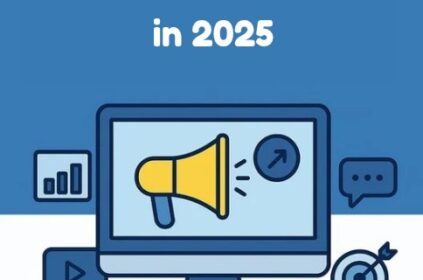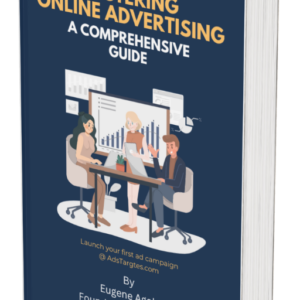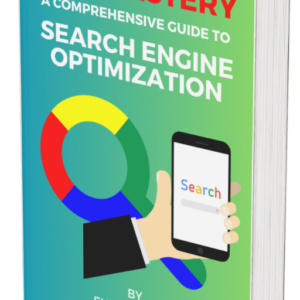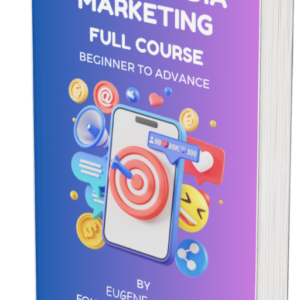If you are tired of pouring ad dollars into platforms you can’t fully control, it’s time to explore a smarter way to advertise in 2025—starting with the right Demand-Side Platform (DSP). Traditional ad platforms like Google Ads and Facebook Ads are no longer enough—especially for advertisers who crave more transparency, control, and performance across channels.
As the digital landscape evolves with rising CPMs, stricter privacy regulations, and increasingly fragmented user journeys, smart digital advertisers are turning to best Demand-Side Platforms (DSPs) to stay ahead. But here’s the catch: with so many DSPs in the market, choosing the right one for your business goals can feel overwhelming.
If you’re a digital advertiser, media buyer, or digital marketer tired of not knowing where your ads actually show up, paying more but converting less, struggling to unify campaigns across devices and platforms, then this guide is for you.
In this comprehensive blog post, I will walk you through everything you need to know about the best DSPs for advertisers in 2025, from why more advertisers are shifting to programmatic to a detailed breakdown of the best DSPs for different business sizes and goals. Whether you’re managing campaigns for clients or scaling your brand, you’ll find actionable insights to make smarter ad tech decisions this year. Let’s help you unlock the power of programmatic and take control of your advertising future.
What is Demand-Side Platform (DSP)?

A Demand-Side Platform (DSP) is a digital advertising tool that allows advertisers to buy ad inventory across multiple websites, apps, and digital platforms—all from one dashboard. Think of it as your control center for running programmatic ads in real-time, using data and automation to target the right people, at the right time, in the right place.
How DSPs Work in Programmatic Advertising
Programmatic advertising is all about automating the process of buying and placing ads. Instead of manually negotiating with publishers, DSPs connect to multiple ad exchanges where inventory is bought and sold in real time through a process called real-time bidding (RTB).

Here’s how it works in simple terms:
- You set your audience targeting, budget, and creative inside the DSP.
- When someone visits a webpage or opens an app, the DSP evaluates if that user matches your targeting.
- If it’s a match, the DSP automatically bids for that impression.
- If your bid wins, your ad is instantly displayed—often in milliseconds.
This entire process happens programmatically and at scale, allowing you to reach millions of users without lifting a finger after setup.
What is the Difference Between DSPs and Traditional Ad Platforms (Google Ads, Meta Ads)?
While platforms like Google Ads or Facebook Ads also offer automated advertising, they operate within closed ecosystems—often referred to as walled gardens. This means you’re limited to their networks, targeting rules, and data access.
In contrast, a DSP gives you:
#1. Access to inventory across thousands of publishers (websites, mobile apps, streaming platforms, etc.)
#2. Greater transparency into where your ads appear and how much you pay
#3. More flexible targeting and bidding strategies
#4. Better control over cross-channel campaigns, including display, video, native, audio, and connected TV (CTV)
Simply put, while Google and Meta are powerful, they don’t give you the full picture or the open reach that a DSP can provide.
Why Are Advertisers Turning to Demand-Side Platforms in 2025?

The shift toward Demand-Side Platforms isn’t just a buzz—it’s a strategic response to growing frustrations in the digital advertising space. Advertisers are realizing that the old ways of buying media are no longer sustainable, especially in a landscape that’s rapidly evolving with new channels, rising costs, and stricter privacy regulations.
Consider what is pushing advertisers to explore DSPs in 2025:
#1. Walled Gardens Limit Reach and Transparency:
Platforms like Google, Meta, and Amazon dominate digital ad spend but operate as closed ecosystems. You can only advertise within their networks, and access to granular data (like site-level performance or user behavior across platforms) is often restricted.
#2. Skyrocketing Ad Costs
With more advertisers bidding for the same audiences and placements, CPMs (Cost Per Thousand Impressions) have been on the rise across major platforms.
Higher costs don’t always translate to better results—especially when you can’t see where your budget is going or how your ads are performing outside the platform.
#3. Privacy Rules Are Reshaping Digital Targeting
New regulations like GDPR, CCPA, and the phasing out of third-party cookies are changing how advertisers collect and use data. Platforms are tightening access, and traditional audience targeting is becoming less precise.
DSPs, however, often integrate with privacy-compliant data providers and use first-party data to maintain targeting precision without breaching regulations.
#4. DSPs Offer a Scalable, Transparent Alternative
Unlike walled gardens, DSPs give you the freedom to run ads across a vast open web, apps, and even offline environments—all while maintaining transparency on where your ads appear and how much you’re paying.
With DSPs, advertisers can leverage real-time data to optimize campaigns on the fly, access detailed reporting and inventory-level insights, use advanced targeting tools like lookalike modeling, geofencing, and device-level targeting. Whether you’re running a campaign for awareness, engagement, or conversions, DSPs offer more control, better reach, and smarter spending.
#5. The Rise of DSPs in Emerging Channels
What makes DSPs even more relevant in 2025 is their adaptability across new and growing media environments. Also, with mobile usage at an all-time high, DSPs help advertisers serve dynamic, in-app ads optimized for engagement and conversions.
In short, DSPs are not just another tool—they’re the next step for advertisers who want to grow smarter, not just bigger, in 2025.
What Are the Top Features to Look for in a Modern DSP?

If you’re exploring the best DSPs for advertisers in 2025, it’s not just about picking a name-brand tool—it’s about choosing the one with the right capabilities to help you scale efficiently, target smarter, and optimize every dollar.
Here is what you should prioritize when evaluating a DSP:
#1. AI- and Machine Learning–Powered Bidding
The best DSPs for advertisers in 2025 use AI and machine learning to automatically adjust bidding strategies in real time, ensuring that your ads reach the right people at the right cost. These intelligent algorithms analyze patterns across audience behaviors, time of day, device type, and more to drive better performance and reduce waste.
If you’re serious about results, look for DSPs that offer predictive bidding models, auto-optimization, and dynamic pacing—hallmarks of the platforms leading the programmatic evolution.
#2. Access to Premium, Cross-Channel Inventory
The best DSPs for advertisers in 2025 don’t just run banner ads—they unlock access to high-impact, cross-device inventory that includes:
- Connected TV (CTV): Reach viewers on Netflix, Hulu, YouTube TV, and other premium streaming environments.
- Mobile and In-App: Serve immersive ads where users spend the majority of their digital time.
- Web Display: Tap into high-quality publishers and news sites across the open web.
- Digital Audio & Podcasts: Target listeners during workouts, commutes, and downtime.
- DOOH (Digital Out-of-Home): Extend your reach with geotargeted ads on smart billboards and screens.
The wider your reach, the better your chances of delivering unified brand experiences—and a modern DSP makes that possible.
#3. Robust Data Integrations (DMPs, CDPs, and First-Party Data)
In a privacy-first world, data strategy is everything. The best Demand-Side Platforms (DSPs) for advertisers in 2025 are those that seamlessly integrate with:
- Data Management Platforms (DMPs) to unify third-party data sources.
- Customer Data Platforms (CDPs) to activate CRM and behavioral data in real time.
- First-party data hubs to let you build cookieless targeting strategies based on your owned audiences.
These integrations not only enable smarter targeting—they also help advertisers stay compliant with global data regulations.
#4. Transparency in Reporting and Attribution
Opaque metrics and unclear attribution are common complaints with walled garden platforms. A quality DSP provides full transparency—from where your ads appear to how much you paid for each impression and how each touchpoint contributed to conversion.
You’ll want features like:
1. Log-level reporting
2. Attribution modeling (multi-touch, linear, etc.)
3. Brand safety and viewability tracking
This level of insight empowers advertisers to refine their strategies and allocate budgets more effectively.
#5. Budget Control and Optimization Tools
Whether you’re working with $10,000 or $10 million, the best DSPs for advertisers in 2025 offer granular budget controls that let you:
- Set daily, campaign-level, or geo-specific budgets
- Use frequency caps to avoid oversaturation
- Optimize based on KPIs like cost per action (CPA), return on ad spend (ROAS), or cost per completed view (CPCV)
Real-time budget pacing and smart recommendations also ensure you don’t overspend—or leave potential conversions on the table.
In fact, the best Demand-Side Platforms (DSPs) for advertisers in 2025 are not just ad-buying tools—they’re full-funnel growth engines powered by data, AI, and transparency. Choosing the right DSP means aligning features with your goals and future-proofing your campaigns for what’s next.
What Are the Best DSPs for Advertisers in 2025?

Choosing the best Demand-Side Platforms (DSPs) for advertisers in 2025 can be overwhelming with so many options available. Each platform offers distinct features, pricing, and integrations tailored to different business needs and advertising goals. In this section, we’ll explore some of the leading DSPs that are revolutionizing the way advertisers execute their campaigns, along with the pros and cons of each.
#1. The Trade Desk (TTD)
This is best for enterprise-level performance marketing.The Trade Desk remains one of the most robust and feature-rich DSPs in the market. Ideal for larger enterprises and high-performance marketers, TTD offers unparalleled access to premium cross-channel inventory, including Connected TV (CTV), mobile, audio, and web display. What sets The Trade Desk apart is its advanced use of AI and machine learning tools to optimize bidding strategies, allowing you to adjust in real-time based on audience behavior and contextual insights.
However, as powerful as it is, TTD can be quite complex for beginners. It requires a solid understanding of programmatic advertising and may feel overwhelming for those just starting out or managing smaller campaigns. The platform’s comprehensive reporting and analytics capabilities are extremely useful for experienced marketers, but they come with a learning curve that may take time to master.
#2. Amazon DSP
If your business is already selling products on Amazon, Amazon DSP could be an excellent choice. This platform offers direct access to Amazon’s rich first-party shopper data, which is invaluable when crafting highly targeted campaigns based on purchase behavior and intent. The platform also allows advertisers to run programmatic display, video, and audio ads across Amazon-owned properties, including the Amazon website, Twitch, and Prime Video.
The major downside of Amazon DSP is its limited reach beyond the Amazon ecosystem. While it excels within Amazon’s vast e-commerce landscape, it doesn’t offer the same flexibility and access to broader cross-channel inventory that other DSPs provide. Additionally, it’s geared more toward advertisers who are already entrenched in the Amazon ecosystem, making it less suitable for those with diverse advertising needs.
#3. StackAdapt
For smaller businesses and advertising agencies, StackAdapt provides a user-friendly platform designed to simplify the programmatic advertising experience. With an intuitive interface and strong customer support, StackAdapt allows advertisers to launch and optimize campaigns quickly without needing deep technical expertise. The platform also supports a wide range of media formats, from display ads to native and video ads, making it versatile enough for various marketing strategies.
However, compared to some of the industry giants like The Trade Desk, StackAdapt may seem less advanced in terms of its AI-driven optimizations and complex bidding strategies. It doesn’t offer the same level of advanced features or access to premium inventory, which may be a limiting factor for larger advertisers looking to scale their campaigns.
#4. Adform
Adform is a European DSP that stands out due to its robust data capabilities, making it ideal for data-heavy advertisers who prioritize privacy compliance and user data protection. One of Adform’s key features is its built-in Data Management Platform (DMP), which allows advertisers to centralize their audience data, optimize their targeting, and create more personalized experiences across campaigns. Adform is particularly well-suited for advertisers in Europe who need to meet GDPR compliance and other regional regulations.
Despite its strengths, Adform’s global reach is not as expansive as some of the larger players like The Trade Desk. This limits its utility for advertisers looking to scale globally, especially in markets outside of Europe. Additionally, while it offers advanced data tools, the platform may not be as user-friendly for newcomers or advertisers without dedicated technical resources.
#5. MediaMath
Custom bidding and flexible integrations. For advertisers who need more control over their bidding strategies and campaign structure, MediaMath is a flexible option. The platform allows for extensive customization of bidding algorithms, which can be particularly useful for advertisers with unique objectives or complex campaign requirements. MediaMath’s open ecosystem means it can integrate with a wide variety of third-party tools, data sources, and technology partners, making it highly adaptable.
However, this flexibility comes with a trade-off: MediaMath requires technical expertise. To take full advantage of its customizable features, advertisers need a team that can manage complex integrations and optimize bidding strategies. As such, it may not be the best choice for smaller businesses or marketers who prefer simplicity over technical sophistication.
#6. Basis by Centro
Basis by Centro offers an all-in-one solution that simplifies programmatic ad buying while providing advanced optimization tools. It’s particularly well-suited for advertising agencies and hybrid teams that manage a high volume of campaigns across multiple clients. The platform features a consolidated workflow, allowing teams to execute and monitor campaigns from a single interface. The user-friendly UI is another major plus, making it easier for teams to collaborate and manage complex campaigns.
However, Basis may not be as effective for businesses outside the U.S. The platform is tailored more for advertisers with U.S.-centric campaigns, and it may lack some of the global capabilities found in other DSPs. Additionally, while its UI is user-friendly, it still doesn’t offer the depth of customization that some larger enterprises may require for more advanced programmatic campaigns.
How to Choose the Right DSP for Your Business
Selecting the right Demand-Side Platform isn’t just about picking the most popular name or the one with the flashiest features. It’s about aligning your platform with your specific goals, team capabilities, and the kind of return on ad spend (ROAS) you’re targeting.
As the programmatic landscape evolves, the best DSPs for advertisers in 2025 are those that offer a mix of precision, scalability, ease of use, and seamless integration with your existing marketing stack.
Here’s a practical framework to guide your decision:
#1. Define Your Budget and Campaign Goals
Before diving into demos or comparing features, be clear about your budget and advertising objectives. Are you running awareness campaigns on Connected TV (CTV)? Looking to drive conversions via mobile display? Or scaling across geographies?
Some DSPs, like The Trade Desk or MediaMath, are tailored for high-budget campaigns with deep customization. Others, like StackAdapt or Basis by Centro, offer more accessible pricing and smoother onboarding for small to mid-sized teams. Knowing your spend threshold will immediately narrow down your options and help you avoid platforms that overdeliver on complexity and underdeliver on affordability.
#2. Evaluate Inventory Access and Targeting Capabilities
One of the biggest advantages of DSPs is access to diverse, premium ad inventory across devices and platforms — from web to mobile, audio, DOOH, and CTV. But not all DSPs provide equal reach. If your audience watches streaming content, ensure your chosen DSP supports CTV buys. If you prioritize retargeting or high-intent audiences, look for strong third-party data integrations and granular targeting filters.
Also, check whether the DSP can handle omnichannel campaigns with unified tracking. In 2025, fragmentation is still a pain point — and using a DSP that connects the dots across channels is key to performance.
#3. Consider UI/UX and Customer Support
It doesn’t matter how powerful a DSP is if your team struggles to use it. A clean, intuitive user interface (UI) can drastically cut down setup and management time, especially for lean teams or agencies juggling multiple accounts. Platforms like StackAdapt and Basis are well-known for their ease of use, while others like The Trade Desk may require more onboarding.
Also, don’t underestimate the value of customer support. Whether you need help setting up pixels, troubleshooting campaign issues, or getting insights on best practices, strong support can mean the difference between a failed campaign and a scalable success story.
#4. Assess Integration with Existing Tools
Your DSP shouldn’t operate in a silo. Ensure it plays nicely with your existing tech stack — including your CRM, analytics platforms, data management platforms (DMPs), customer data platforms (CDPs), and any attribution tools you use. Integration allows you to activate first-party data, optimize lifetime value (LTV) targeting, and analyze results more holistically.
For example, a business using HubSpot or Salesforce will benefit from a DSP that integrates easily with those tools, enabling seamless audience syncing and campaign feedback loops.
Ultimately, choosing the best Demand-Side Platform for your advertising strategy in 2025 comes down to fit — not just features. It’s about finding a DSP that aligns with your business size, campaign sophistication, and growth goals, while giving you the control, clarity, and scale to win in today’s dynamic digital ad market.
Conclusion
As we navigate a more complex, privacy-conscious, and multi-channel digital world, Demand-Side Platforms (DSPs) have rapidly moved from a niche tool for enterprise marketers to a core pillar of modern media buying. The limitations of self-serve platforms like Meta Ads and Google Ads — often referred to as “walled gardens” — are becoming more apparent in 2025.
These platforms restrict audience data, limit cross-channel reach, and operate with their own attribution logic, which can hinder advertisers looking for deeper control and transparency. DSPs offer a compelling alternative.
Whether you’re an e-commerce brand looking to retarget across web and CTV, or a B2B company wanting to reach niche decision-makers with precision, DSPs provide the scalability, transparency, and audience access that today’s advertising demands. With features like AI-powered bidding, first-party data integrations, and access to premium cross-device inventory, the best Demand-Side Platforms for advertisers in 2025 are helping businesses drive stronger ROAS with less guesswork.
If you’re ready to go beyond the limitations of traditional platforms and gain more control over your spend, targeting, and reporting — then yes, DSPs are not just worth it, they’re essential.
Many DSPs offer free trials, flexible onboarding, or managed service options to help you get started. Take the time to test one or two platforms aligned with your business needs. Evaluate how they perform against your current stack. You might find that the move to programmatic advertising via DSPs is exactly what you need to unlock smarter, more profitable campaigns.










